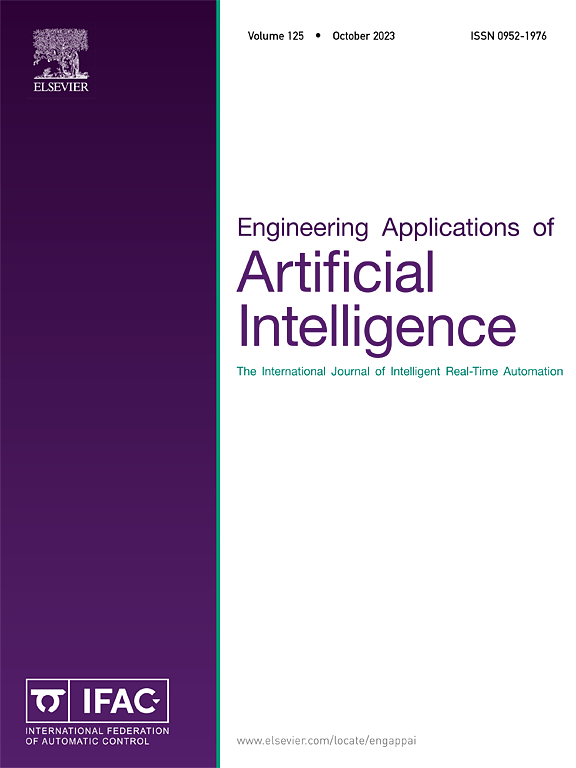Scalable and transferable graph neural networks for predicting temperature evolution in laser powder bed fusion
IF 7.5
2区 计算机科学
Q1 AUTOMATION & CONTROL SYSTEMS
Engineering Applications of Artificial Intelligence
Pub Date : 2025-04-25
DOI:10.1016/j.engappai.2025.110898
引用次数: 0
Abstract
Predicting temperature distributions in laser powder bed fusion (L-PBF) processes is essential for mitigating thermal distortions and ensuring the structural integrity of manufactured parts. Traditional finite element analysis (FEA) methods, while accurate, are computationally intensive and struggle to scale to larger domains. To address these limitations, this study proposes novel predictive models based on Graph Neural Networks (GNNs) to simulate thermal dynamics in L-PBF processes. The models leverage high-fidelity FEA data from small-scale domains to generalize effectively to larger domains with minimal retraining. For single-laser setups, the GNN achieves a Mean Absolute Percentage Error (MAPE) of 3.77 %, while significantly reducing computational costs. For instance, a thermomechanical simulation for a 2 mm square domain typically takes about 4 h, whereas the single-laser model predicts thermal distributions almost instantly. When calibrated for larger domains, the models significantly enhance predictive performance, showing notable improvements for square domains of 3 mm and 4 mm. Additionally, the models show a decreasing trend in Root Mean Square Error when tuned to larger domains, suggesting the potential for becoming geometry-agnostic. The interaction of multiple lasers complicates heat transfer, necessitating larger model architectures and advanced feature engineering. Using hyperparameters from Gaussian process-based Bayesian optimization, the best multi-laser surrogate model demonstrates a 46.4 % improvement in MAPE over the baseline model. By providing scalable and efficient predictive tools alongside FEA, this work paves the way for thermal modeling in L-PBF.
用于预测激光粉末床熔合温度演变的可扩展可转移图神经网络
预测激光粉末床熔融(L-PBF)过程中的温度分布对于减轻热变形和确保制造零件的结构完整性至关重要。传统的有限元分析(FEA)方法虽然准确,但计算量大,难以扩展到更大的域。为了解决这些局限性,本研究提出了基于图神经网络(GNNs)的新型预测模型来模拟L-PBF过程的热动力学。该模型利用来自小规模领域的高保真有限元数据,以最少的再训练有效地推广到更大的领域。对于单激光设置,GNN实现了3.77%的平均绝对百分比误差(MAPE),同时显着降低了计算成本。例如,2平方毫米区域的热力学模拟通常需要大约4小时,而单激光模型几乎可以立即预测热分布。当对更大的域进行校准时,模型显着提高了预测性能,对3毫米和4毫米的方形域显示出显着的改进。此外,当调整到更大的域时,模型显示均方根误差呈下降趋势,这表明可能成为几何不可知论的。多个激光器的相互作用使传热变得复杂,需要更大的模型架构和先进的特征工程。使用基于高斯过程的贝叶斯优化的超参数,最佳多激光代理模型的MAPE比基线模型提高了46.4%。通过提供可扩展和高效的预测工具以及有限元分析,这项工作为L-PBF的热建模铺平了道路。
本文章由计算机程序翻译,如有差异,请以英文原文为准。
求助全文
约1分钟内获得全文
求助全文
来源期刊

Engineering Applications of Artificial Intelligence
工程技术-工程:电子与电气
CiteScore
9.60
自引率
10.00%
发文量
505
审稿时长
68 days
期刊介绍:
Artificial Intelligence (AI) is pivotal in driving the fourth industrial revolution, witnessing remarkable advancements across various machine learning methodologies. AI techniques have become indispensable tools for practicing engineers, enabling them to tackle previously insurmountable challenges. Engineering Applications of Artificial Intelligence serves as a global platform for the swift dissemination of research elucidating the practical application of AI methods across all engineering disciplines. Submitted papers are expected to present novel aspects of AI utilized in real-world engineering applications, validated using publicly available datasets to ensure the replicability of research outcomes. Join us in exploring the transformative potential of AI in engineering.
 求助内容:
求助内容: 应助结果提醒方式:
应助结果提醒方式:


